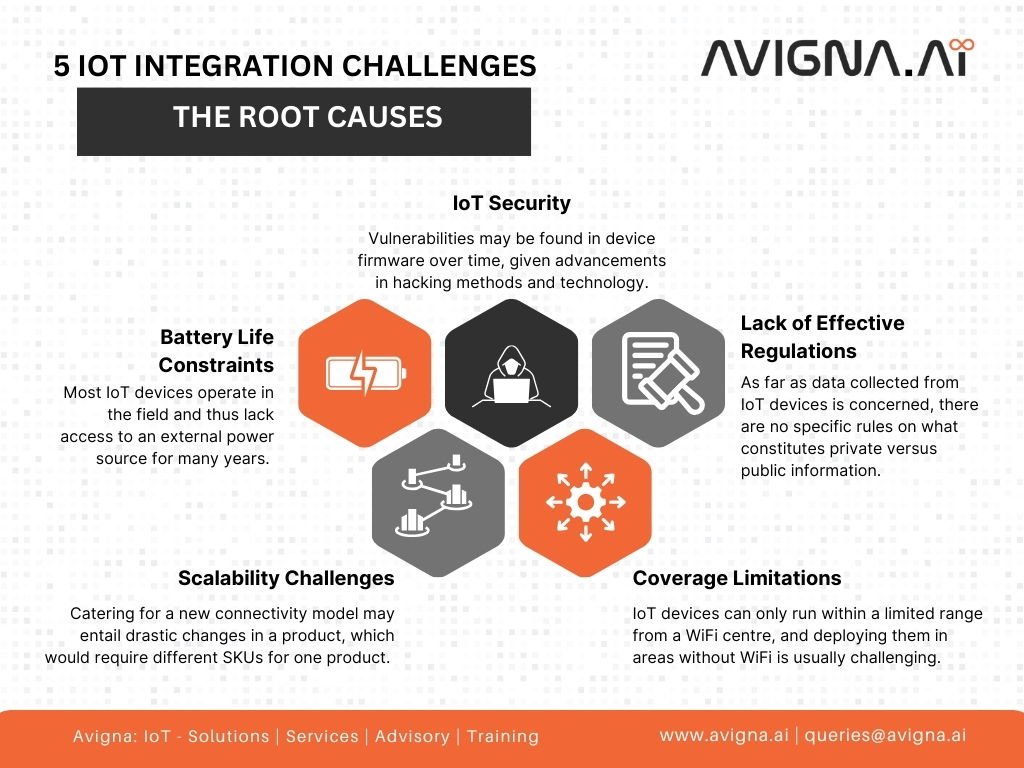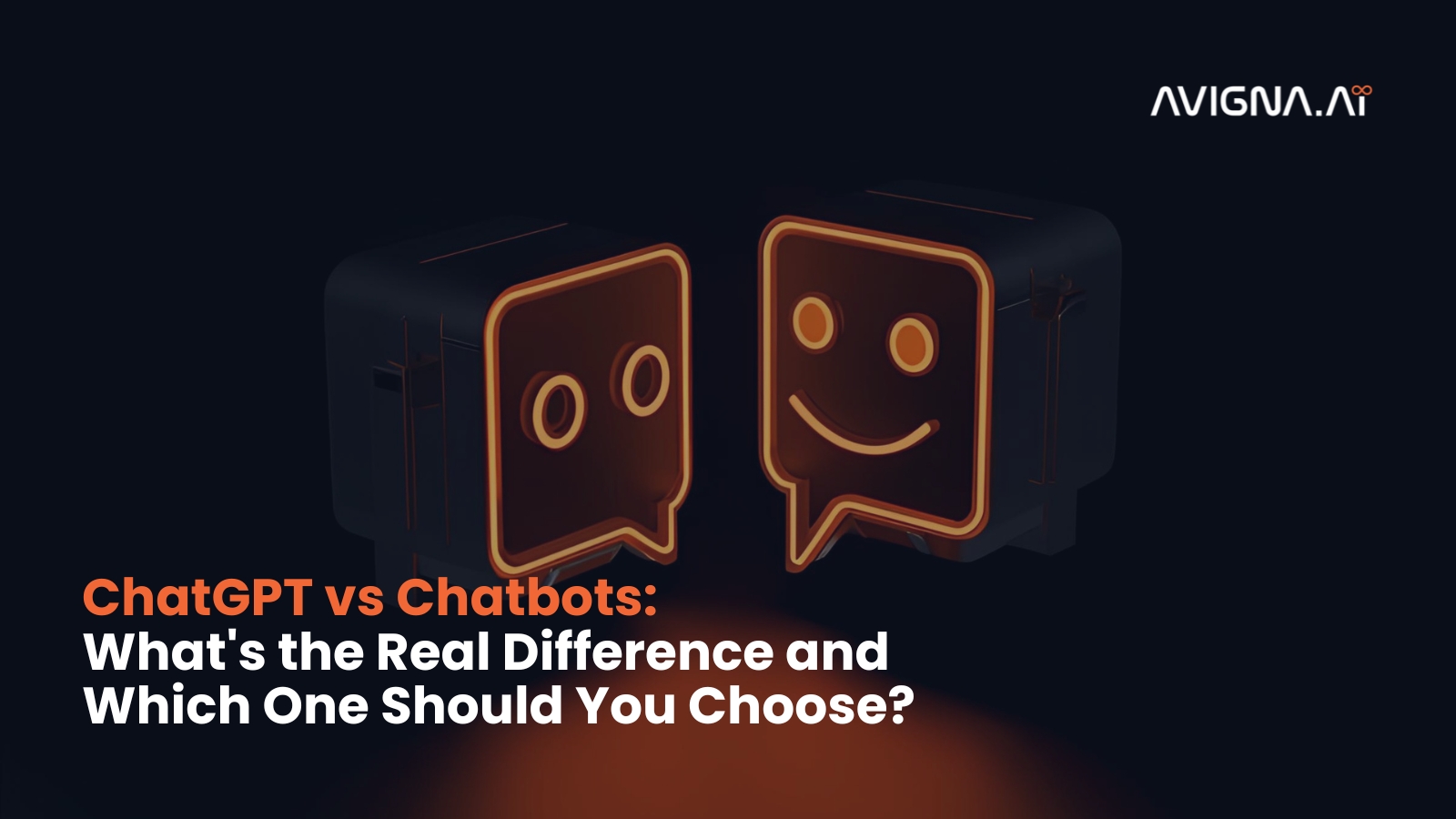Sending data to software or other connected devices is termed IoT integration. It allows data analytics, real-time monitoring, and automation. However, a Gartner Research survey proved that some businesses have concerns over challenges associated with the integration of IoT solutions.
The IoT has transformed industry practice, enabled people to get information on and control even remotely located systems, as well as empowered consumers for more than two decades. Today the number of IoT-supporting devices in the world is a few billion, and the number is constantly increasing.
However, the IoT has presented challenges to product designers that they face in the course of their development. These IoT Integration Challenges have been there since the advent of internet technology. However, they are gaining much importance due to the increasing adoption and accessibility of IoT.
Although it is relatively easy to add connectivity to a device, each IoT designer needs to overcome these IoT Integration Challenges while creating a complete IoT solution. Many manufacturers have yet to realize how IoT Consulting Services can help them overcome these difficulties. This article will discuss the five significant challenges of the Internet of Things (IoT) and solutions to overcome them.
1. IoT Security
Security problems in cyberattacks have always existed with IoT devices. There have also been many cases of IoT systems being incorporated into botnets, such as what occurred with the notorious Mirai botnet or being compromised to gain access to systems or networks or even abuse them. Unfortunately, such challenges for IoT systems integrators with IoT devices remain an issue.
The majority of IoT devices are low-powered and need to provide operation for many years using a single charge. Therefore, they have to transmit and receive data using as little energy as possible. Many IoT device manufacturers find it hard to add security measures like encryption, authentication, and security protocols because they consume a lot of power during data transmission, leading to increased operation costs.
In addition, more vulnerabilities may be found in device firmware over time, given advancements in hacking methods and technology. However, without updates, there is a chance for such vulnerabilities to accumulate along the device’s life span. IoT devices, however, are typically dispersed, and manufacturers cannot conduct updates on-site or directly access them. The device may also expend a lot of power when implementing remote firmware updates if it lacks the necessary data throughput.
It gets even worse because an attacker may choose to exploit the end user’s already existing network infrastructure, such as WiFi, and then access other appliances and applications that may be connected to the same network.
2. Lack of Effective Regulations
Government regulatory systems are slow to adapt to the fast-paced growth of this technology known as the Internet of Things. Lawmakers must focus on IoT security and make stringent laws that assure both product makers and users.
Challenges in IoT Regulation
Besides connectivity laws, other laws and rules regarding data utilization depend on the location of deployment, such as GDPR. Here are some examples:
Absence of Clear Privacy Policies:
As far as data collected from IoT devices is concerned, there are no specific rules on what constitutes private versus public information. For example, an IoT toy would be able to capture data from the child’s body without the parent’s prior knowledge. This data could then be shared with the manufacturer and possibly with other individuals.
Inadequate Consequences for Data Leaks:
However, companies are barely penalized in case of a data breach, and this is hardly an encouragement to improve on the security measures. The case involves millions of credit card numbers and usually results in little response apart from ruining the reputation of the company involved.
Retention of Outdated Data:
In addition, government agencies and private companies often hold on to data for extended periods, even after it is irrelevant. Once data is merged into a broad system, it may prove not easy to delete. For example, individuals who were mistakenly added to the TSA’s “no-fly” list may find this step of removing their names very difficult after they get into the system.
3. Coverage Limitations
However, there are also IoT Integration Challenges that the devices are faced with. For instance, IoT devices depend on network connections to transmit and receive data, and without such a connection, the device’s functioning becomes compromised.
Many IoT connectivity solutions exist, each designed for specific coverage scenarios. Making the right choice is paramount because it may significantly limit deployment possibilities, making coverage a persistent problem for IoT.
An example is WiFi as an IoT connectivity option that is used commonly but has short distances and demands to be close to the router. It implies that the IoT devices can only run within a limited range from a WiFi center, and deploying them in areas without WiFi is usually challenging. This is where you may have to create the proper infrastructure that will suit the given needs or buy devices that contain other means of connectivity that cover the areas better.

4. Scalability Challenges
The number of devices in the field is usually in the hundreds and sometimes thousands for many companies that specialize in IoT business. Hundreds of leading manufacturers of IoT deploy millions of devices around the globe. The majority of these companies start by building their own IoT infrastructure, with many different connectivity options for deployments in varying geographical areas.
Every solution entails distinctly different management platforms, support systems, and underlying technology. Additionally, catering for a new connectivity model may entail drastic changes in a product, which would require different SKUs for one product. As operations increase, device management and logistics become very difficult.
This problem goes beyond cellular IoT; it affects other technologies like GSM, which have global coverage. However, in that of cellular IoT, different MNOs own the network infrastructure such that one needs providers who have roaming agreements with each carrier, or else one has to acquire new SIM cards every time one connects to a different page.
5. Battery Life Constraints
Almost all IoT devices have tiny batteries because of their small size and the fact that new generations of IoT technology are becoming more and more efficient; increasing battery sizes may make a device bulky and inappropriate for location and use.
One example is that a larger battery on the predictive maintenance sensor may not be mounted in places where it would be well protected from intense temperature, debris, impact, and other harsh conditions.
Most IoT devices operate in the field and thus lack access to an external power source for many years. However, the extended lifespan is only achievable when the device’s normal operations consume little power. The battery drains off very fast in case of prolonged data transmission or receiving processes, which is a big problem.
Conclusion
Finally, IoT has its challenges for business, among which are security problems, regulatory complications, lack of coverage, scalable issues, and short battery life. These challenges, however, are not insuperable. Businesses can overcome these challenges in the integration of IoT with the cloud if they put in place robust security mechanisms, press for prudent regulations, and embrace scalable solutions.
One needs to get the fundamentals right and be flexible as technology is advancing at a fast pace. Companies can exploit all the benefits of IoT by implementing proactive problem-solving strategies and delivering high-quality services that offer real value to customers.
At Avigna, we help businesses overcome IoT integration challenges. Discover the future of connectivity. Contact us at queries@avigna.ai for expert IoT solutions.



